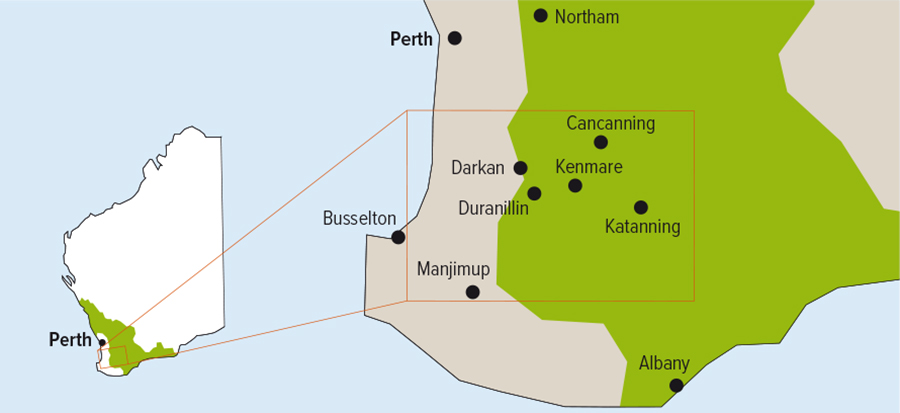Understanding how cereals emit chemicals that attract or repel root lesion nematode (Pratylenchus spp.) could form the basis of new management strategies for this damaging pest.
Murdoch University PhD researcher Dr Rhys Copeland has identified that chemicals common to both tolerant and susceptible cereals had differing effects on nematodes, depending on their concentration. His study found high chemical concentrations only in the more tolerant cereals, providing insights into how nematode tolerance may work. Experiments into this plant–chemistry connection formed a pilot study, using Calingiri wheat and Trical 342 triticale as plant hosts and the root lesion nematode (RLN) species P. neglectus. Rhys says the findings offer proof of concept for new directions in plant breeding to increase tolerance and possibly resistance in future varieties.
“I’ve also been able to identify genes expressed by the nematodes that potentially enable them to perceive chemicals emitted from host plants. Disrupting these genes could also provide a path for potential control strategies,” he says.
His PhD research was supported by GRDC and supervised by plant biologist Dr John Fosu-Nyarko at Murdoch University’s Plant Biotechnology Research Group in WA.
Figure 1: This map of south-west Western Australia shows the towns where wheat, barley and oats fields were sampled for root lesion nematode. The green region depicts the WA grainbelt.

Source: Adapted from Davis and Braimbridge, 2005
Yield loss
With a 2009 GRDC-invested study estimating that RLN infestation can reduce wheat yields by up to 33 per cent, costing growers $477 million a year, insight into cereal tolerance is important.
Dr Copeland says barley and oat crops are also affected. Nematodes feed on root tissue, weakening the root system, which reduces a plant’s ability to absorb nutrients and water and creates routes for secondary infections to further weaken plants. “Often, affected plants look stunted and yellow, which growers may think is a result of drought, nutrient deficiency or disease caused by other pathogens,” he says.
Given the potential for significant yield impacts, helping growers identify RLN as the cause could assist in more effective management responses, he says.
While one aim was to identify what attracts RLN to host plants, the other was to identify RLN populations in WA’s wheatbelt, particularly P. quasitereoides and P. curvicauda.
 Researcher Dr Rhys Copeland has been investigating root lesion nematode as part of his GRDC-supported PhD. Photo: Rhys Copeland
Researcher Dr Rhys Copeland has been investigating root lesion nematode as part of his GRDC-supported PhD. Photo: Rhys Copeland
RLN populations
During field sampling, Dr Copeland paid particular attention to P. quasitereoides and P. curvicauda. P. curvicauda was identified in Perth in 1991 but was not found in a wheat paddock until 2017. Its distribution in WA is largely unknown.
In 2020, Dr Copeland sampled wheat, barley and oat paddocks in six towns between Katanning and Manjimup, in the south-west of the state. P. curvicauda was found at two sites and P. quasitereoides was found in four sites.
The two species were not found together during the sampling, although both species were found in co-infestations with other common RLN. This indicates that they could also occur together. Dr Copeland says identifying the extent of P. curvicauda infestation is important because plant tolerance or resistance to nematodes can be species-specific. “A plant tolerant to P. quasitereoides may not be tolerant to P. curvicauda or other root lesion nematodes, and current commercial tests are not designed to identify P. curvicauda".
“So, P. curvicauda could be a bigger issue and have a greater impact on yield and farm profits than we realise. By better understanding the host range of this species, we can develop more effective strategies to help protect crops,” he says.

























































